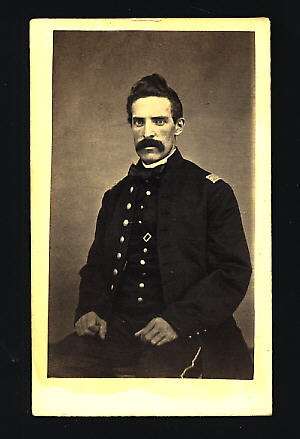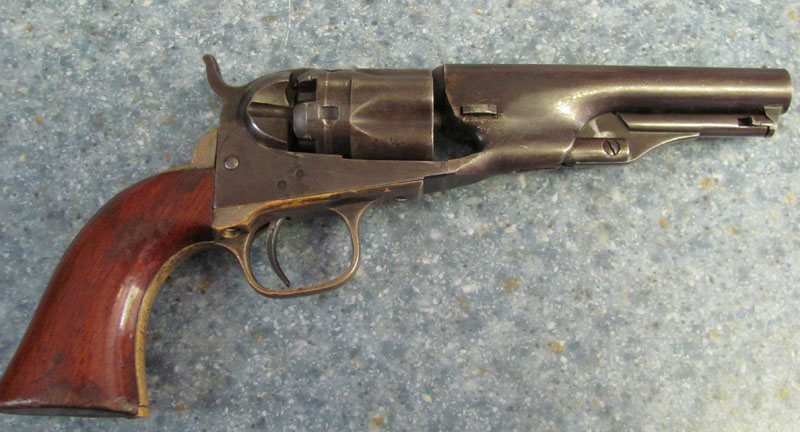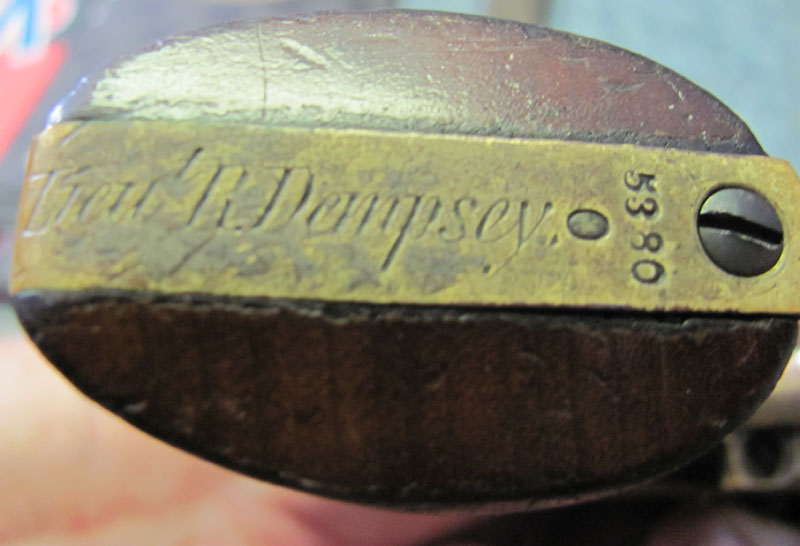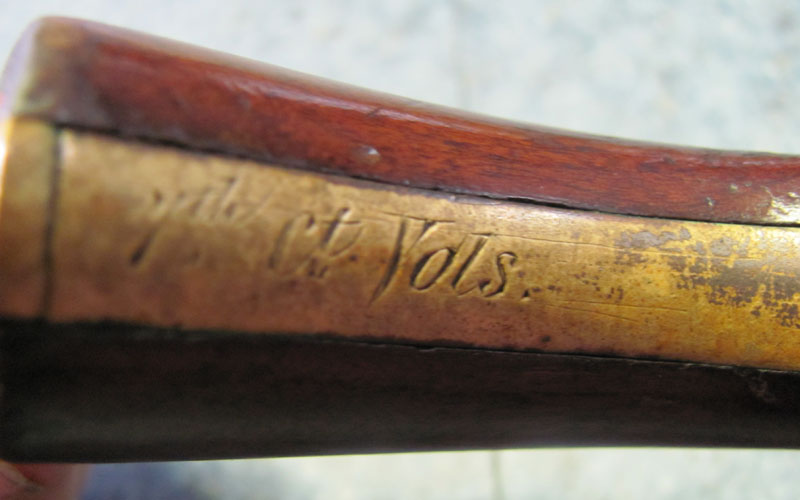At Olustee, Dempsey led thirty men at the extreme end of the right flank and was likely caught in the crossfire. A musket ball fired from the rebel front about one hundred yards away ripped into his chest and a second ball slammed into his head. He fell to the ground and lay on his back. According to a private who was at his side, "Dempsey merely said, 'I am killed. I shall die here,' and immediately expired."4 But the Seventh's colonel reported, "He spoke but once, merely asking to be laid on his side instead of his back."5 His body was buried on the battlefield. The Confederates who interred him had no idea of his frequently repeated desire, "that wherever he fall he might be buried."6 His wife, Carrie, whom he married while on leave in the autumn of 1862, survived him.
1 In a letter to Union General-in-Chief Maj. Gen. Henry Halleck, Maj. Gen. Quincy Gillmore, commander of the Department of the South on Jan. 31, 1864, listed four reasons for going into Florida: "I beg leave to state that the objects and advantages to be secured by the occupation of that portion of Florida within my reach, viz, the richest portions between the Suwannee and the Saint John's Rivers, are: First. To procure an outlet for cotton, lumber, timber, turpentine, and the other products of that State. Second. To cut off one of the enemy's sources of commissary supplies. He now draws largely upon the herds of Florida for his beef, and is making preparations to take up a portion of the Fernandina and Saint Mark's Railroad for the purpose of connecting the road from Jacksonville to Tallahassee with Thomasville, on the Savannah, Albany and Gulf, Railroad, and perhaps with Albany, on the Southwestern Railroad. Third. To obtain recruits for my colored regiments. Fourth. To inaugurate measures for the speedy restoration of Florida to her allegiance, in accordance with instructions which I have received from the President by the hands of Major John Hay, assistant adjutant-general." OR, I, XXXV, 1: 279.
2 According to the battle report by Capt. Charles C. Mills, the advance of the Seventh was entirely checked after four miles, "all the left of the line being thrown into a swamp and exposed to a galling fire from the enemy's right. From this position the right was advanced a few rods, the ground being more open and passable." A rod equals 5.5 yards, so "a few rods" is interpreted to measure twenty yards. OR, I, XXXV, 1: 310.
3 Carrie Dempsey pension record, NARS.
4 The March 4, 1864, issue of The Winsted Herald reported that Pvt. John Rowley was at Dempsey's side. Two privates named John Rowley served in the Seventh. Dempsey's Company E included one John G. Rowley, who enlisted in 1861 and mustered out in September 1864. Company D also had a John Rowley, who was drafted in 1863 and executed at Petersburg in 1864. The Winsted Herald (Winsted, Conn.), March 4, 1864.
5 Colonel Joseph Roswell Hawley, 1826-1905, was a newspaperman and Republican Party organizer before the war. He enlisted as captain in the First Connecticut Infantry in 1861, then Lt. Co. of the Seventh Connecticut, where he rose to the rank of brigadier general and command of the District of Wilmington, N.C. He also served as Chief of Staff to Gen. Alred Terry. After the war, he served as Connecticut's governor from 1866-1867 and several terms in the U.S. House of Representatives as Congressman and Senator.
6 The Winsted Herald (Winsted, Conn.), March 11, 1864.
The following images are of Lt. Dempsey's pistol, a Colt model 1862 police, recovered from the battlefield.
From the
Richard Ferry Collection. Used with permission.
Battle of Olustee home page.



